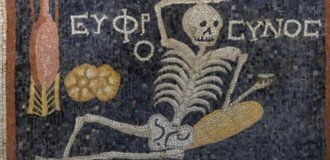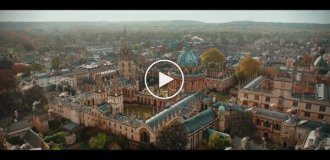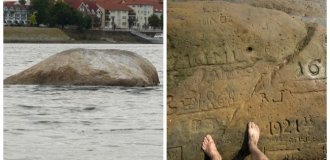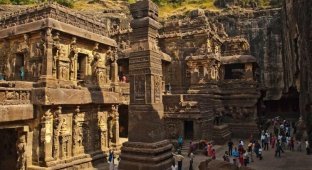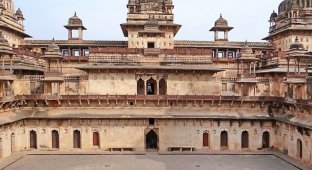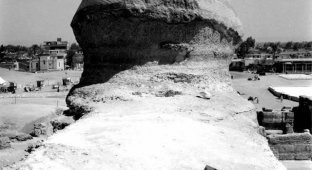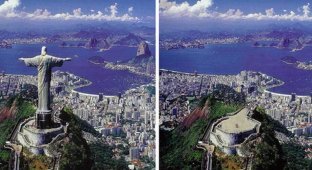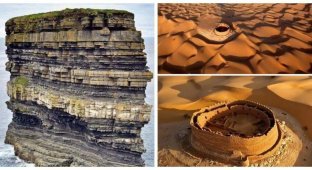Unique historical footage that will take you into the past (21 photos)
Thanks to the surviving photographs, we have the opportunity to immerse ourselves in that era and look at life in different parts of the world. All the photographs have been restored and colored, allowing us to look at the world as if time had stopped for a moment, allowing us to examine every detail: clothes, houses, facial expressions, habits and the colors of everyday life. 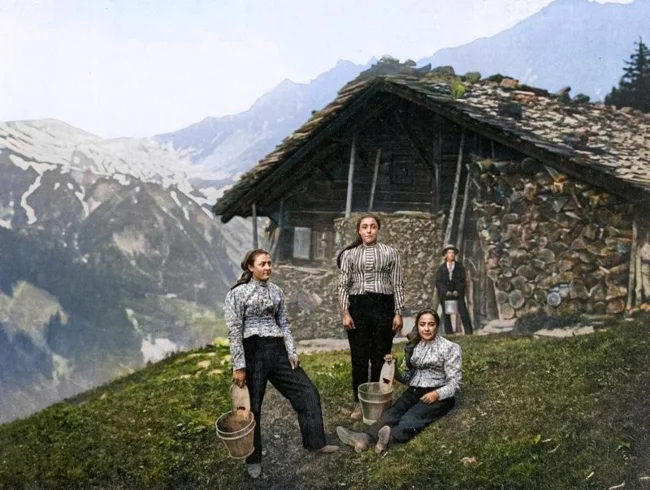
Wales, 1890s. 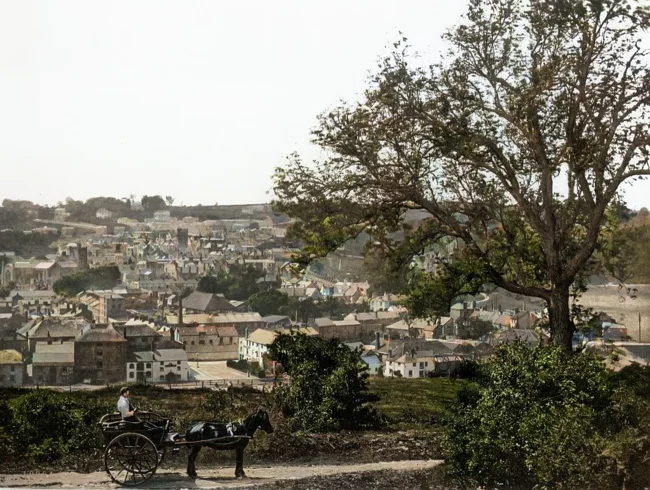
Taj Mahal. India, 1890s.
The Taj Mahal, located on the banks of the Yamuna River in the Indian city of Agra, is not just an architectural monument, but the greatest monument to love.
Built in the 17th century by Emperor Shah Jahan in memory of his beloved wife Mumtaz Mahal (who died giving birth to her fourteenth child), this white marble mausoleum became a symbol not only of personal grief, but also of the grandeur of the Mughal era. Its domes, minbars, exquisite carvings and patterns of precious stones amaze to this day.
The Taj Mahal changes as the day goes on: the morning light turns it pink, during the day it shines white, and in the evening it becomes soft, like a sigh of memory. 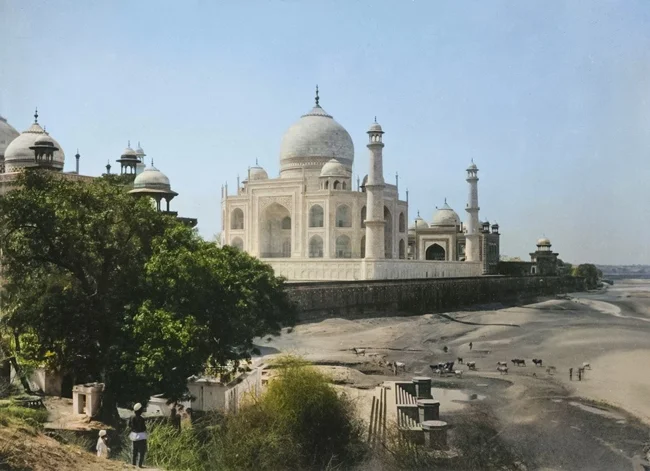
A second-hand clothes shop. London, 1876-1877. 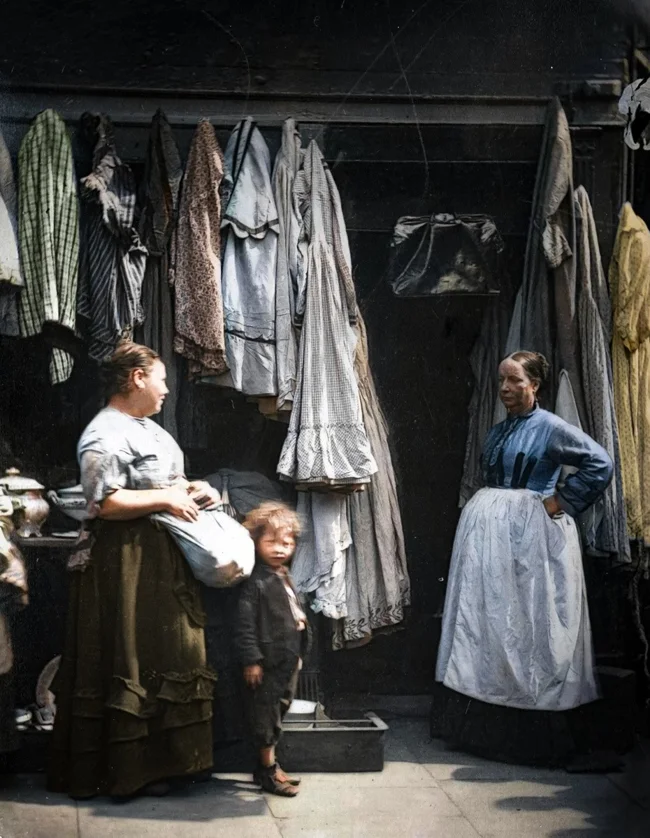
Old village, Isle of Wight, England, 1890s. 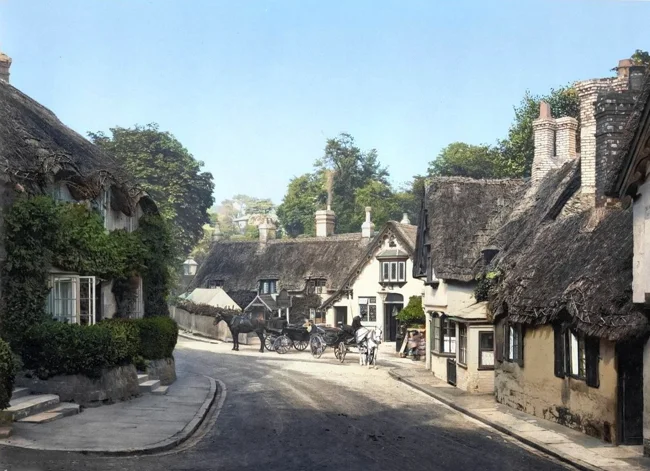
Ice cream maker. Constantinople, 1898.
Ice cream makers of the 19th century were more than just merchants - they were keepers of coolness and joy in an era when cold was kept not in a refrigerator, but in vats of ice under rags. Ice cream was a delicacy in those days, not available to everyone, but even then it attracted crowds of children and adults.
The vendors carried their boxes on their backs or shoulders, and some even used small carts. They offered not only ice cream, but also fruit waters, sorbets and sweet ice cubes - everything that could refresh on a hot day.
It is interesting that the recipes were passed from hand to hand, and some masters even added exotic spices, citrus or flower infusions to their ice cream - to surprise and delight the client. 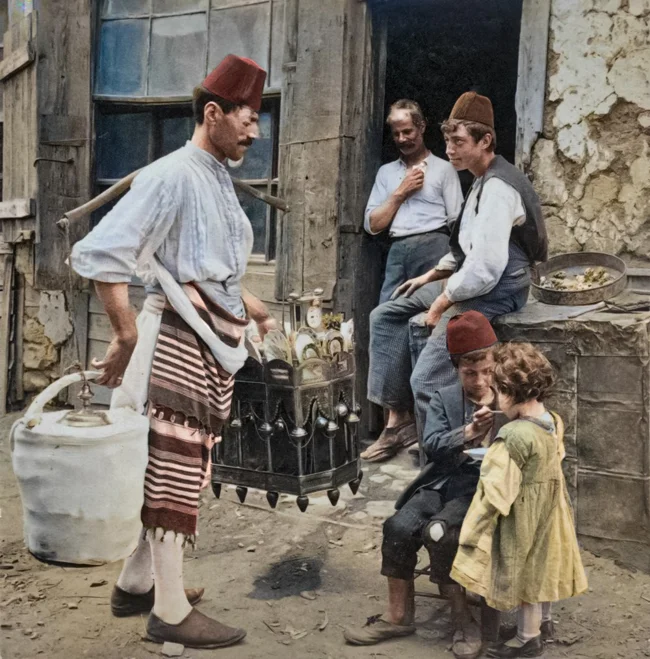
Gone into leapfrog. Paris, 1896. 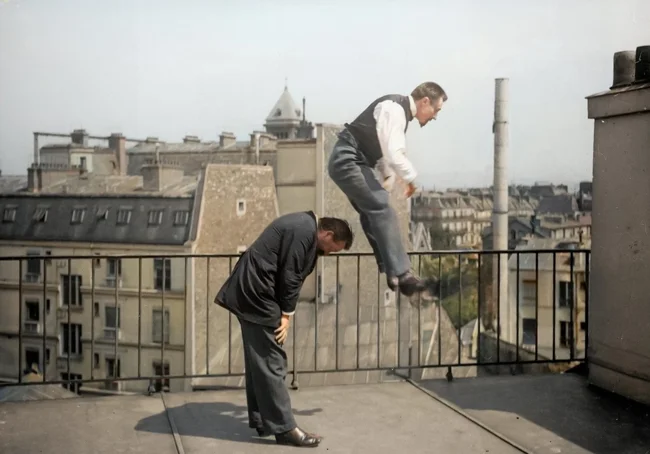
This active children's game is known in many countries of the world, although it is called differently everywhere. In France it is called - "jumping sheep", in Romania - "goat", and in India - "jumping horse". In Italy this game is known as "little horse", and in the Netherlands - "jumping kid". In Korea and Japan there are also their own versions of the game - "jumping over the fire"
But leapfrog was not always a game. In dark times of history, for example, in the Mauthausen concentration camp, it was forced to perform as a physical exercise that had little in common with fun. It was a way to wear out prisoners - forcibly, to the point of complete exhaustion.
So a simple children's game turned into both joy and tragedy.
But for most of us, it will remain a memory of summer, the yard, and a simple, almost eternal - childhood.
Photo of Ada McCall and her daughter collecting buffalo patties on the prairie near Laken, Kansas, circa 1893. 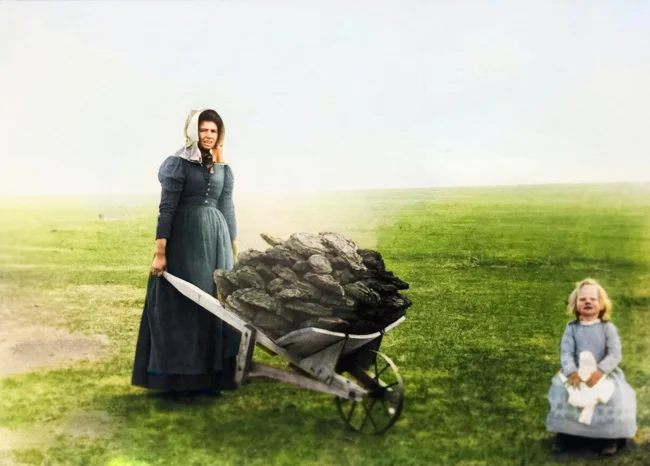
Native Americans have used dried dung as fuel for centuries - practical, affordable, and effective. For them, it was not a strange way of heating, but a proven solution in conditions of scarce natural resources.
When European settlers came to the continent, they were initially distrustful of such an "exotic" source of heat. Women, accustomed to wood and coal, wrinkled their noses in disgust, but over time, many nevertheless adopted this method from the locals - for the sake of survival and convenience.
The sailboat "Genoa" in Le Havre during a storm, 1885.
The famous French artist Claude Monet has a painting "The Lighthouse in Le Havre", painted by him 17 years before this moment and in the same place. It was 1864 - a time when the future impressionist was still finding his way, and the lighthouse was already burning with its fire, indicating the course of the ships and inspiring the artist.
This work was one of Monet's early works, and although not as famous as his "Rising Sun" or "Water Lilies", it is still an important page in the history of light and sea on canvas. 
Victorian roller coaster, 1890s.
Victorian roller coasters were not the dynamic steel monsters we know today, but graceful, almost theatrical structures of wood and iron.
In the late 19th century, such rides became part of a new culture of entertainment: they were built in amusement parks, decorated with carvings, lit by gas lamps, and the ride was considered almost an adventure. Passengers dressed accordingly - ladies in corsets, gentlemen with canes - but the excitement was the same.
These were the first "speed rides" where fear mixed with pleasure, and the spirit of adventure replaced modern effects. 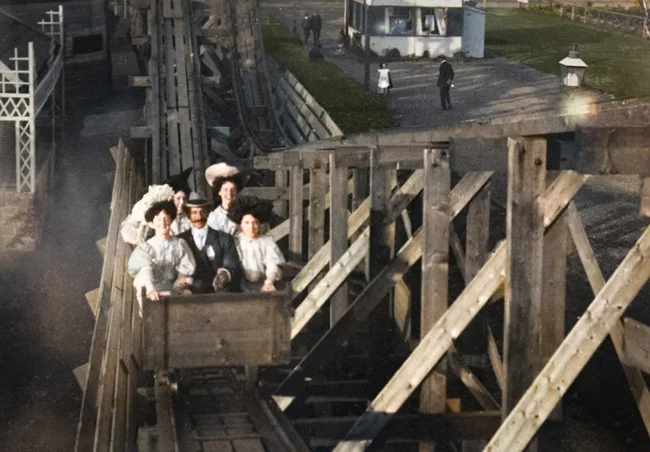
Passengers wearing hats on the "steps" of an omnibus traveling between Bank and Strand in London, 1865. 
Omnibuses in 19th century London were not just transport, but the beginning of an entire era in city life. It was with them that the history of public passenger transport began, which continues today with "red two-story buses".
The first omnibuses appeared in the capital of Great Britain in the 1820s and were wooden horse-drawn carriages that ran along established routes. They were slow but reliable, open to everyone (with a ticket), and quickly became part of the London street.
Heligoland girls in national costumes. Heligoland, Germany, 1890s. 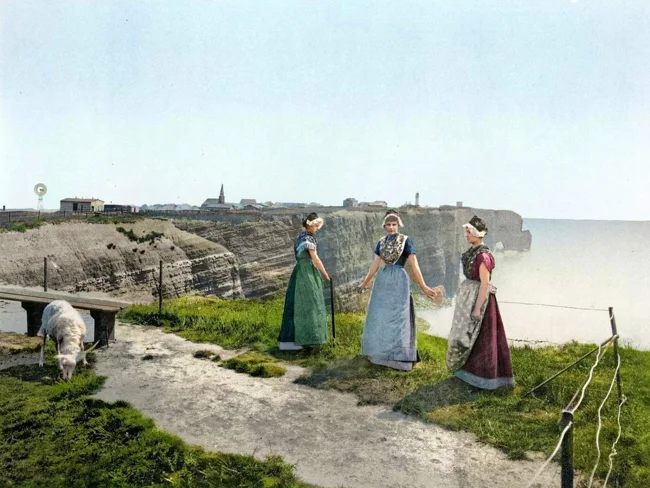
Heligoland is not just an island in the North Sea. It is a small but surprisingly unique piece of land, covered with red rocks, white houses and a thousand-year history.
This island was a subject of dispute between the powers for a long time: it belonged to Denmark, Great Britain and, finally, Germany. Military exercises took place here, naval secrets were kept, and after World War II, the most powerful non-nuclear explosion in human history was carried out on the island. With its help, the British military destroyed bunkers and other structures built by Nazi Germany for its submarines.
But despite wars, explosions and the redivision of the world, Heligoland remained. It stands on its red rocks, as if saying: "I survived. And I will always stand." Today, about one and a half thousand people live on the island.
Birthplace of Nicholas von der Flue. Obwalden, Switzerland, 1890s. 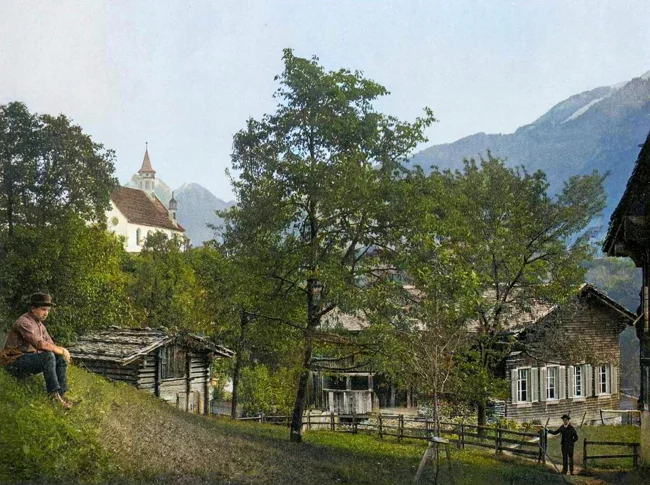
Nikolas von der Flue was a Swiss hermit, ascetic and mystic, and a saint (since 1947) patron saint of Switzerland. He is known for fasting for over twenty years and helping to prevent a war between the Swiss cantons.
Children listening to birds singing, 1892. 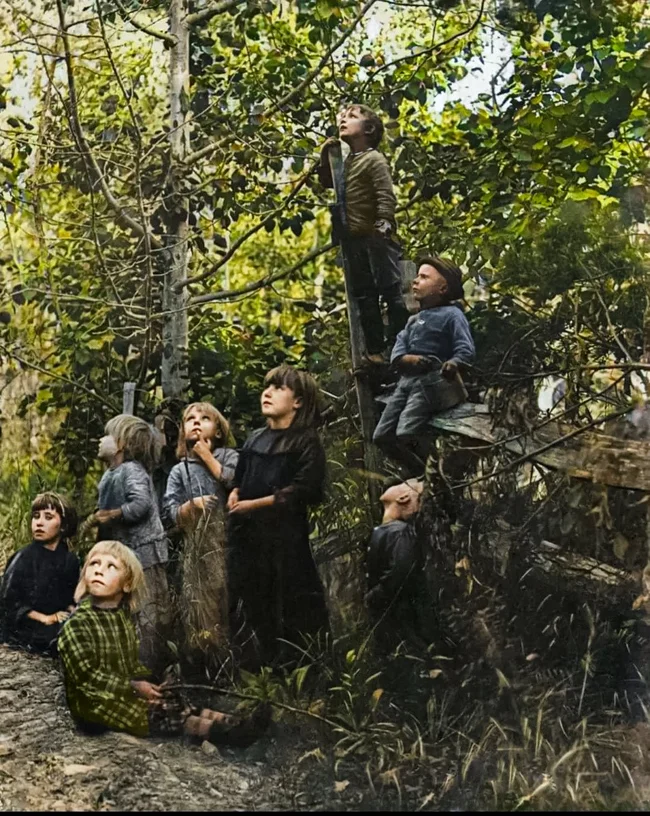
You wouldn't see anything like this these days: children listening to birds singing! Not a phone, not headphones, just silence, trees and the lively trills of migratory guests.
Switzerland, 1890s. 
The first motorists of Los Angeles, 1897. 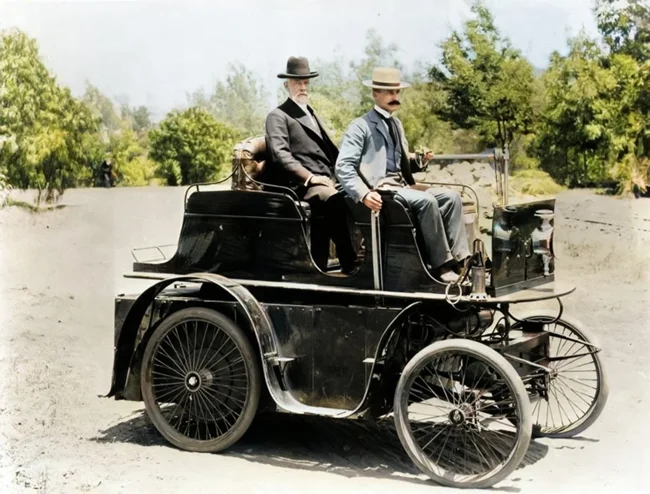
J. Philip Erie (front seat) and Los Angeles Mayor William H. Workman (back) in the city's first documented automobile in 1897, an Erie and Sturgis model powered by a four-cylinder engine, two of which drove the front and rear axles.
A girl sells meat at a market in Newcastle, England, 1877. 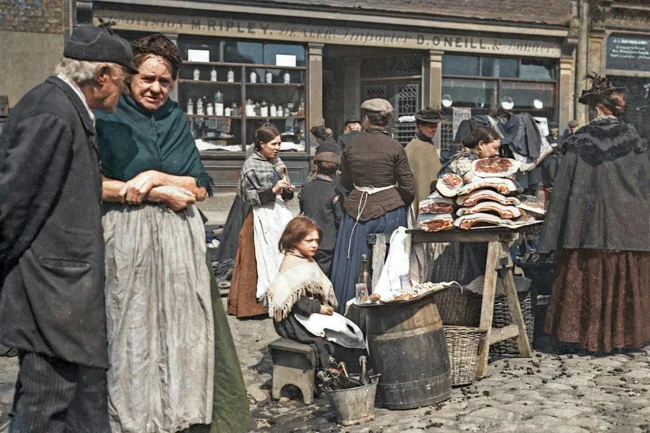
Naturally, the girl's mother sells meat, and she is responsible for the relaxing drinks. Most likely, there is cider in the barrel.
In the 19th century, cider was not just a drink - it was a symbol of the English village, its traditions and rhythm of life. It was especially popular in the west of the country - in the counties of Somerset, Devon and Gloucestershire, where apple orchards bloomed in the spring, and in the fall they yielded a harvest for long winter aging.
Back then, cider was drunk everywhere: farmers at work, city dwellers in pubs, and even children - in a low-alcohol version.
Appian Way. Italy, 1893. 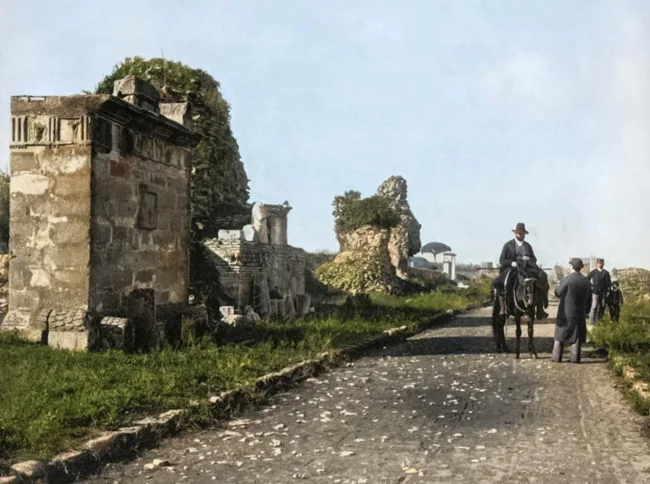
The Appian Way is one of the most famous arteries of Ancient Rome, nicknamed the "queen of roads" in antiquity.
Laid in 312 BC, it connected Rome with the city of Capua, and later even with Brindisi in southern Italy. Legions marched along it, triumphal chariots rode, couriers and caravans ran. It was along the Appian Way that slaves condemned to death on the cross walked, and it was along it that victors and emperors entered Rome.
New York, 1870s. 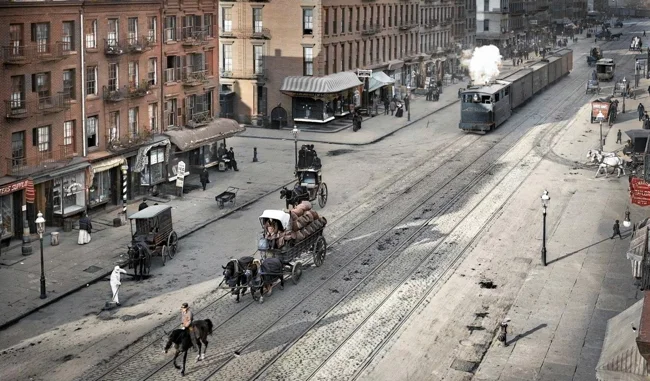
Elizabeth Turville Wood on the beach with two puppies examining fish, 1899. 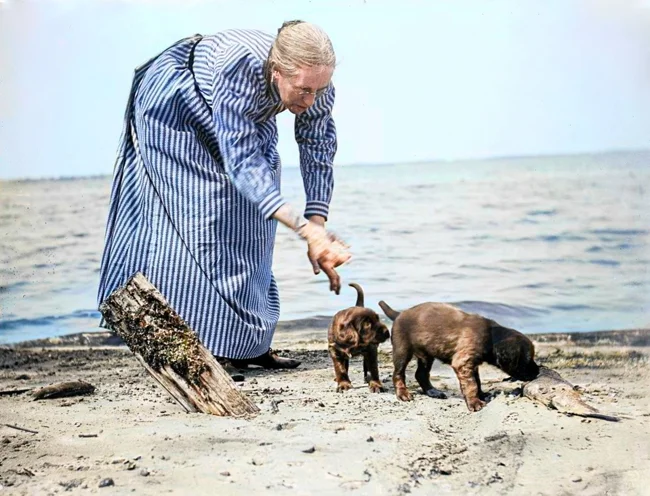
San Francisco Cliff House, 1890s. 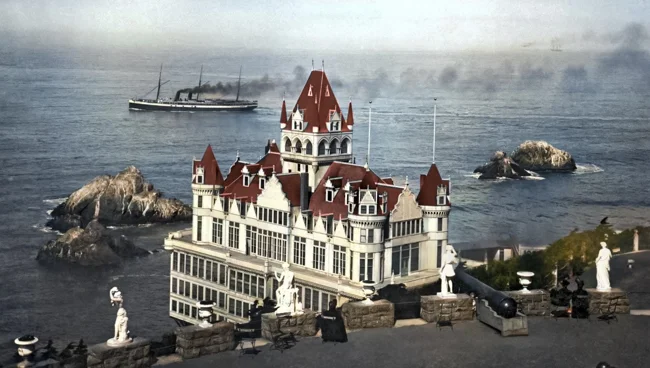
The castle was opened in 1896 by Adolph Sutro, the mayor of San Francisco. It survived the 1906 earthquake, but then burned to the ground in 1907.





